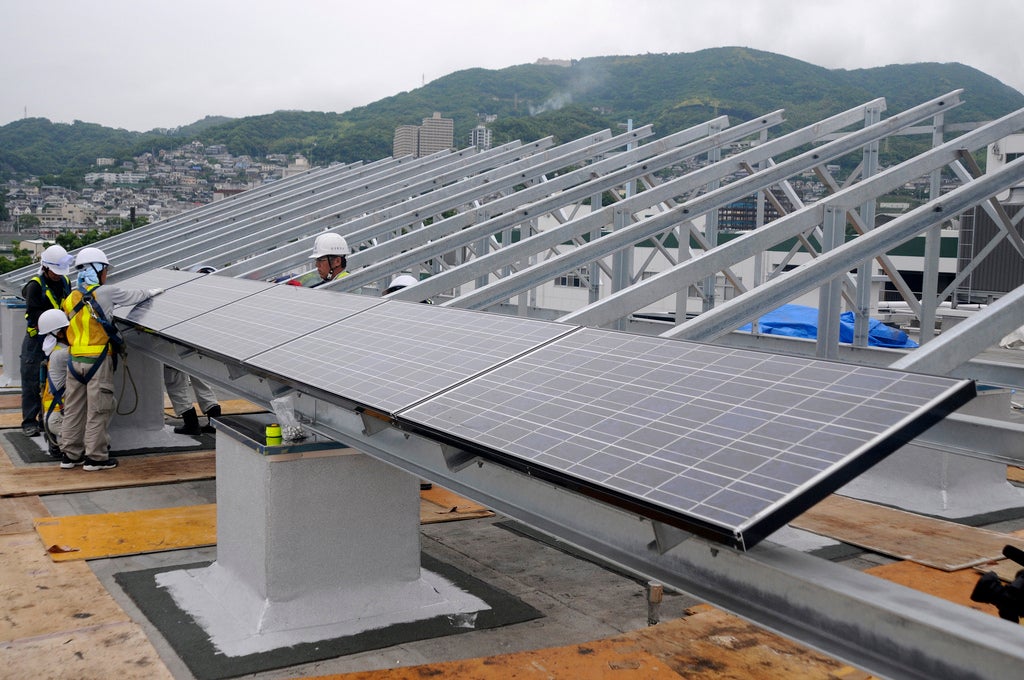Japan intends to increase the share of solar PV in its electricity generation mix, but is facing several challenges in the development of its domestic solar PV industry. First and foremost, the costs of system installation and generation are still too high. Generation cost of solar PV in Japan is higher comparing international benchmark. Grid constraints and land availability are the other factors expected to be responsible for a slowdown in the country’s solar PV market in the medium-term.
Though commercial installations are still driving the market, they began to fall in 2016 along with utility-scale solar PV capacity additions. They have continued to decline as existing approved projects are being delayed and fewer new projects are getting approvals. This trend will be further supported by the proposed feed-in-tariff (FIT) cuts for projects with implementation delays. The realisation rate for approved projects is a major problem; it is only around 20% for utility-scale systems. The main reasons for low realisation rate are non-mandatory time frame for project completion and insecurity about the future of the FIT system.
Recognising the high cost of generation, the Japanese government introduced the auction process to address the concern, but the results have not been as successful as expected. In the first solar auction held in 2017, just 140MW of solar projects were assigned. Japan’s second solar auction took place in mid-September 2018, and also resulted in disappointment as the lowest bid was above its targeted ceiling. The upper limit for bids was set at JPY15.5/kWh ($0.14), while the lowest bid from all nine bidders was submitted at JPY16.47/kWh ($0.15). The government allocated 197MW of solar capacity in this auction.
In November 2018, Japan’s Ministry of Economy, Trade and Industry (METI) proposed a reduction in FIT for large-scale PV projects (over 2MW) approved between 2012 and 2014 that will not reach completion by March 2019. It is estimated that around 23.5GW of solar projects which are entitled to FITs of JPY40/kWh ($0.36/kWh), JPY36/kWh ($0.32/kWh) and JPY32/kWh ($0.29/kWh) may be affected and be assigned a new rate of JPY21/kWh ($0.19/kWh). METI has said that the cuts are necessary to reduce the public burden of the FIT subsidies, which are added to consumer’s bills. The Ministry is unhappy with the number of unfulfilled permits. About 23% of the total capacity approved in 2012 is not operating, whilst 49% approved in 2013 and 59% approved in 2014 are also not operating.
This proposal to cut FITs has raised concerns among business groups and investors. According to business groups, the FIT cut proposal makes no distinction between assets that have achieved development or construction milestones and which have credible sponsors, and projects that lack such attributes. They claimed an abrupt cut would undermine confidence in the security, stability and predictability of Japanese market rules. Industry participants have stated that the suddenness of the proposal, its unilateral schedule and ambiguity around implementation is hard to deal with and could put future and existing investments at risk. They have suggested that the government ease the conditions for the FIT reduction.
Developers have argued that delays in large-scale solar project development is due to a significant amount of time taken in environmental mitigation measures, land acquisition, transforming agricultural land into industrially usable land and increasing resistance of utilities due to capacity constraint of local grids.

US Tariffs are shifting - will you react or anticipate?
Don’t let policy changes catch you off guard. Stay proactive with real-time data and expert analysis.
By GlobalDataAmidst all the raised concerns and suggestions by investors, developers and industry bodies, the government has now announced that the reduction in FITs for projects over 2MW in size and approved between 2012 and 2014 will be applied starting from September 2019 and not from March, as originally planned. The plan to cut FITs in March for projects under 2MW remains however. The deadline for the grid-connection of projects over 2MW has also been postponed by another six months, to September 30 2020. The developers that are able to finalise their projects by this date will receive FITs set before the cut proposal.
Policy reforms are needed to preserve a delicate balance between containing costs, sustaining installations in line with targets, and maintaining investor confidence.





